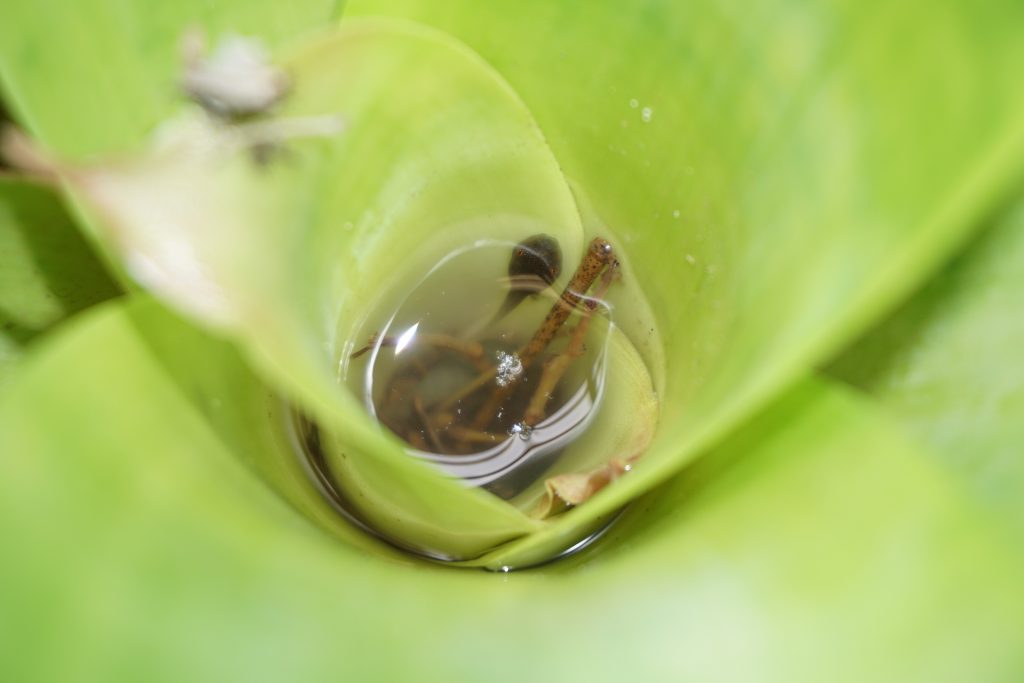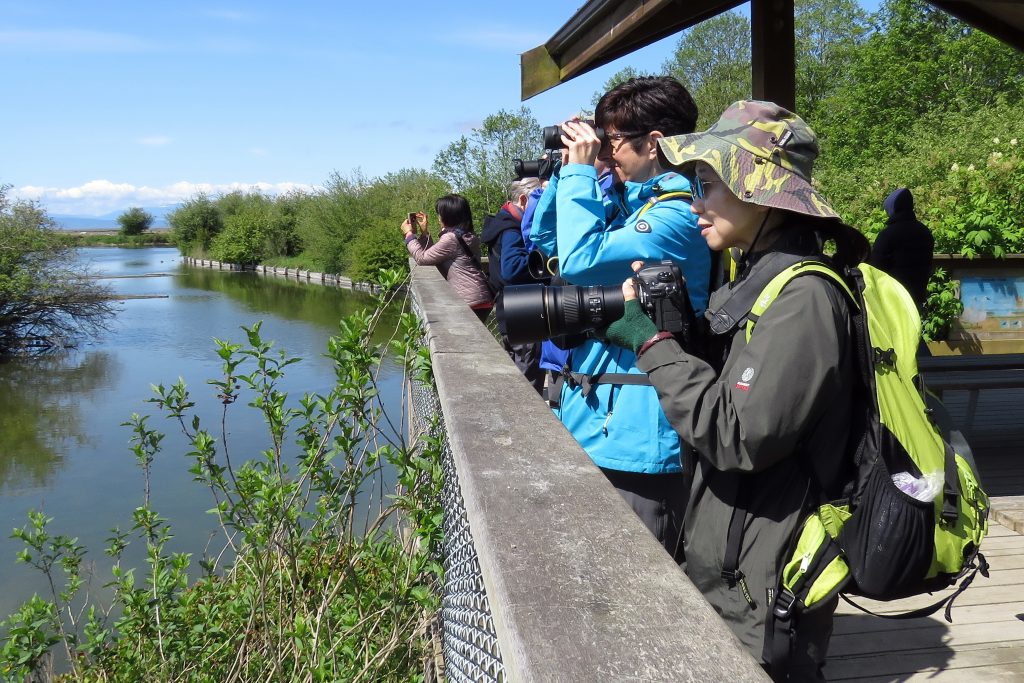As the world suffers from an ongoing biodiversity crisis, there is an urgent need for change. Humans have driven a massive decline in biodiversity globally, of which an estimated 30% has been connected to habitat degradation through land use1.
The way the environmental designers work with water is a critical piece in the puzzle of how land use is reimagined for a biodiverse future. Understanding the complex relationship between biodiversity and water has been a major area of study for scientists across disciplines, providing ample data both to catalyze and guide the work of environmental designers in this area.
[1] “What Is the Human Impact on Biodiversity?”
What is the relationship between biodiversity and water in the landscape?
The relationship between water and biodiversity is not a one-way street. The Global Biodiversity Outlook found that “biodiversity is directly implicated in maintaining most ecosystem functions that deliver [water-related] services, but it is also a co-beneficiary of improved ecosystem conditions”1. Biodiverse ecosystems tend to manage water well because of their biodiversity, while simultaneously, landscapes with consistent and available water tend to support a higher degree of biodiversity.
One of the most apparent markers of rich biodiversity in a landscape is the presence of water. While in some cases the presence of water is obvious and significant, such as rivers, oceans, lakes, and streams, even large plant leaves collecting a few droplets of dew or a small depression filling with water after a rain can have a significant impact on the presence of wildlife nearby.

The quality of available water in a landscape is directly tied to biodiversity. As mentioned above, biodiverse ecosystems tend to manage water well, and in this case, biodiversity can create the conditions necessary to maintain water quality. In this way, biodiversity performs an ecosystem service that is self-regulating, and can benefit humans as well. Reduction of biodiversity can have a negative effect on water quality, which in turn drives further loss of biodiversity. For more information on water quality, please visit the Water Quality blog page.
The different states and conditions of water also impact biodiversity. For further information, please visit any of the following ecosystem-specific blog pages: Wetlands, Intertidal Zone, Lotic Ecosystems, Lentic Ecosystems, and Riparian Zones.
[1] Secretariat of the Convention on Biological Diversity, “Water and Biodiversity.”
How can environmental designers maximize biodiversity through water?
As environmental designers reimagine land use in the decades to come, we have a significant responsibility not just to reduce harm, but also to revitalize landscapes for biodiversity, both through large scale planning and conservation measures, as well as through smaller interventions and networks. Since we know that biodiversity and water are intricately co-dependent, improvements to water quality and systems must occur as an integral part of all efforts to increase or safeguard biodiversity. Understanding how to maximize biodiversity within the scale and constraints of a project through water is a helpful starting point. Here is a selection of considerations:
Research, and work with experts on local plants, animals, and ecology to develop water-based plans that respond to site-specific ecological needs.
Understand what is beyond the site. Both water and life are almost never confined to a project site, so understanding water regimes (see the Watersheds blog page) as well as large-scale ecosystems that surround a site is a critical part of integrating into a network of biodiversity, especially with limited-impact small-scale projects.
Add and improve sources or collection points for water in designed landscapes, one of the most impactful moves to increase or maintain local biodiversity. This can occur across scales, from adding plants that collect dew droplets for insects in an urban front yard, to daylighting streams or planning city-wide networks of rain gardens (see the Rainwater Management blog page).
Improve water quality. Often, biodiversity loss in aquatic or near-aquatic ecosystems is related to degradation of water quality. Starting with water quality ensures that biodiversity increases can be sustained by that which it relies on, while finishing with ecology ensures that the new level of water quality can be maintained.
Provide regulated access to watery ecosystems. While the presence of humans may not seem like a key factor in increasing biodiversity, providing safely considered access to biodiverse ecosystems, along with educational programs, can help people experience firsthand the importance of a landscape and of biodiversity, prompting future generations to care better for the land around them.

Sources
Secretariat of the Convention on Biological Diversity, “Water and Biodiversity: Summary of the Findings of the Fourth Edition of the Global Biodiversity Outlook as They Relate to Water,” 2015, https://www.cbd.int/gbo/gbo4/gbo4-water-en.pdf
“What Is the Human Impact on Biodiversity? | Royal Society.” https://royalsociety.org/topics-policy/projects/biodiversity/human-impact-on-biodiversity/.
Images
Figure 1: Jones, Adam. “Disruption to Tiny Life Can Lead to Big Changes in Warmer Climate.” University of Alabama News (blog), October 12, 2020. https://news.ua.edu/2020/10/disruption-to-tiny-life-can-lead-to-big-changes-in-warmer-climate/.
Burke Mountain Naturalists. “Field Trip to Reifel Bird Sanctuary May 2017,” May 31, 2023. https://www.burkemountainnaturalists.ca/photos/field-trip-to-reifel-bird-sanctuary-may-2017/.
Additional Resources
Landezine. “Dr. Stephan Brenneisen: Living Roofs – Biodiversity and Water Retention by Design Measures.” https://landezine.com/dr-stephan-brenneisen-living-roofs-biodiversity-and-water-retention-by-design-measures/.
A video lecture that focusses on methods for creating biodiverse green-roofs.
Brezar, Zas. “The Cute, the Bad and the Ugly – On Urban Biodiversity and Ecological Aesthetics.” Landezine. https://landezine.com/the-cute-the-bad-and-the-ugly-on-urban-biodiversity-and-ecological-aesthetics/.
An opinion piece that outlines the relationships between biodiversity and the aesthetics of designed spaces in urban centers.
Precedents
xʷəyeyət – Iona Island: space2place
Richmond, BC, Canada

xʷəyeyət / Iona Island is an extensive re-imagination of Vancouver’s waste water treatment facility and the surrounding landscape that aims to remediate ecological, geological, and cultural harm done by previous alteration to the landscape.
Project can be viewed here.
Pollinator Passages: ByBi, multiple community participants
Oslo, Norway

A community-led initiative, pollinator passages aims enlists “urban dwellers, professionals, neighborhoods, municipal agencies, organizations and businesses to help create good habitats and thriving routes for pollinators across the entire city” of Oslo. Variably scaled interventions and helpful resources make this initiative easy for many to participate in, helping to restore this critical aspect of biodiversity in a growing urban center.
